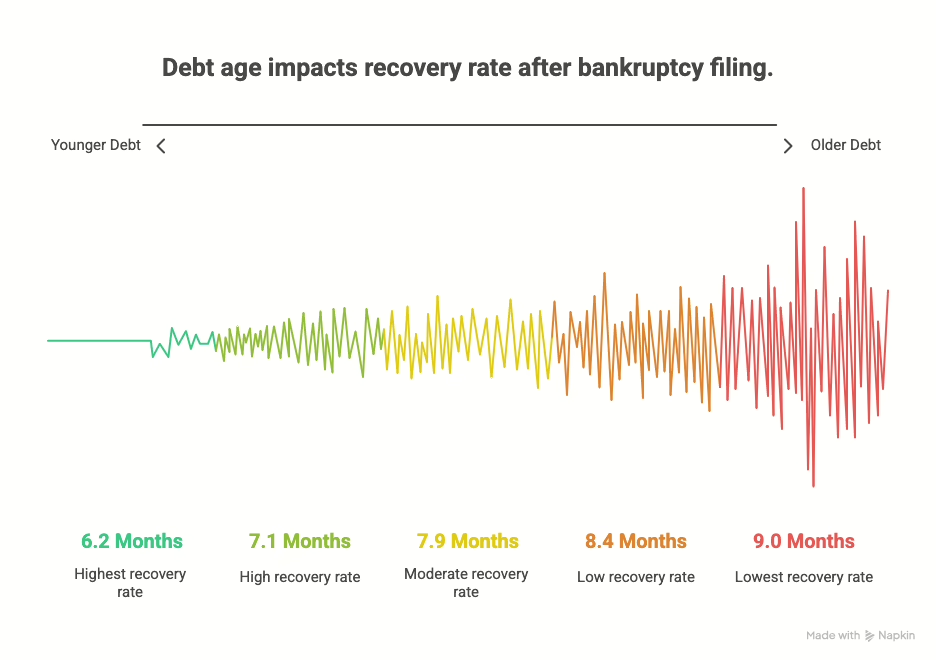In the world of business, financial health is everything. Companies thrive or falter based on their ability to manage resources effectively and meet short-term obligations. Enter the acid test, also known as the quick ratio, a vital financial metric that helps assess a company’s immediate liquidity. This ratio provides insight into whether a business can cover its short-term liabilities without relying on the sale of inventory, making it an invaluable tool for business owners, financial managers, and even a commercial collection agency looking to evaluate a company’s financial stability before pursuing debt recovery.
For businesses working with a commercial collection partner, understanding liquidity metrics like the acid test can be essential in determining creditworthiness and risk exposure. Let’s explore what the acid test entails, why it matters, and how it can impact your business decisions.
What Is the Acid Test?
The acid test is a financial ratio that evaluates a company’s ability to meet its short-term liabilities using its most liquid assets. These include cash, accounts receivable, and marketable securities—assets that can be quickly converted to cash. Inventory is excluded from this calculation because it may not be immediately liquid, and its value can fluctuate based on market conditions.
The formula for the acid test is straightforward:
An acid test ratio greater than 1 indicates that a company has enough liquid assets to cover its current liabilities, while a below 1 suggests potential liquidity challenges.
Understanding the Acid Test Ratio and Its Practical Benefits for Businesses
Why Is the Acid Test Important?
- Immediate Liquidity Check The acid test goes beyond the basic current ratio by focusing only on liquid assets. It provides a clearer picture of a company’s short-term financial health and its ability to address pressing financial obligations.
- Avoiding Financial Pitfalls Businesses with a poor acid test ratio may struggle to pay suppliers, meet payroll, or handle unexpected expenses. This metric serves as an early warning system for potential financial distress.
- Building Stakeholder Confidence Investors, lenders, and creditors often consider the acid test ratio when evaluating a company. A strong ratio demonstrates financial stability, making securing funding or negotiating favorable terms easier.
- Strategic Decision-Making Understanding the acid test ratio allows business owners and financial managers to make informed decisions about cash flow management, debt repayment strategies, and operational efficiency.

Practical Applications of the Acid Test
1. Assessing Financial Health
Consider a small manufacturing company evaluating its ability to pay suppliers within 30 days. The business owner can calculate the acid test ratio to determine if its liquid assets can meet these obligations without relying on sales or inventory turnover.
2. Evaluating Risk During Expansion
Expanding a business often involves taking on additional liabilities. A low acid test ratio might signal that the company should delay expansion plans until liquidity improves, avoiding the risk of overextension.
3. Benchmarking Against Competitors
Comparing acid test ratios across competitors in the same industry can reveal strengths or weaknesses. A higher ratio may indicate a stronger position in managing short-term liabilities.
4. Monitoring Seasonal Fluctuations
The acid test can highlight periods when liquidity is tight for businesses in industries with seasonal sales cycles. Proactively addressing these periods can prevent cash flow crises.
Real-life Example
Imagine a retail company, ShopSmart Inc., with the following financial data:
- Cash: $50,000
- Accounts Receivable: $80,000
- Marketable Securities: $20,000
- Inventory: $150,000
- Current Liabilities: $120,000
Using the acid test formula:
With a ratio of 1.25, ShopSmart Inc. can confidently meet its short-term obligations without relying on inventory sales. This strong liquidity position reassures investors and creditors while allowing the company to pursue growth opportunities.
Common Misconceptions About the Acid Test
- “A High Ratio Is Always Better.” While a high acid test ratio signals liquidity, excessively high ratios may indicate underutilized assets. Businesses should aim for a balance that supports operational efficiency without hoarding liquid resources.
- “It’s the Only Metric That Matters” The acid test is a critical tool, but not the sole indicator of financial health. Complementary metrics, such as the debt-to-equity ratio and cash flow analysis, provide a more comprehensive view.
- “Inventory Doesn’t Matter” Excluding inventory from the acid test doesn’t imply that inventory isn’t important. Instead, it highlights that inventory is less liquid and may not be immediately available to meet obligations.
How to Improve Your Acid Test Ratio
If your company’s acid test ratio is below 1, consider these strategies to enhance liquidity:
- Tighten Credit Policies: Encourage quicker customer payment by offering early payment discounts or adjusting credit terms.
- Optimize Accounts Receivable: Regularly review outstanding invoices and implement collection strategies for overdue accounts.
- Control Operating Expenses: Identify areas to reduce discretionary spending without impacting core operations.
- Sell Non-Essential Assets: Liquidate surplus or underutilized assets to generate immediate cash flow.
Conclusion: A Valuable Financial Tool
The acid test ratio is more than just a financial formula—it’s a roadmap to understanding your business’s short-term health. Regularly calculating and analyzing this ratio can identify potential challenges, strengthen your company’s financial position, and make informed decisions that pave the way for sustainable growth.
At Burt and Associates, we understand the complexities of financial management and are here to help businesses navigate their liquidity challenges. Explore our glossary for more financial insights, or learn how we can assist with managing your accounts receivable.
As a finance manager, you understand the importance of a smooth and timely financial close. But even with the best strategies, challenges can arise. That’s where the right partnership can make all the difference. At Burt and Associates, we specialize in tailored, ethical debt collection practices that align with your business goals. By integrating our services, you can focus on optimizing your financial close process without the added stress of managing overdue accounts.
Curious how businesses have successfully leveraged financial insights like the acid test ratio to overcome challenges and improve cash flow? Explore our case scenarios to see how Burt and Associates can guide your business to success. Click below to learn more!
Let's Work Together to Optimize Your Business!
At Burt and Associates, we specialize in business-to-business (B2B) debt collection, prioritizing strong business relationships and tailored ethical recovery practices. Choose the approach that best fits your needs, and let’s take the first step toward improving your cash flow.
If you’re ready to discuss your overdue accounts and explore customized solutions, schedule a free consultation with one of our experts.
Schedule an Appointment.
Commercial Collection Topics
- How to Proceed When Your Client Files Bankruptcy Chapter 11 and 13 filings allow for reorganization. The debtor pays the debt back through a court arranged a repayment...
- The Role of Tariffs in Small Business Debt As small businesses navigate 2025, economic uncertainty continues to shape financial landscapes, with tariffs playing a pivotal role. Trade policies...
- Cash Flow Optimizer – Past Due Accounts How managing past due accounts can generate cash flow....
- November Budget Checks: Preparing Your Business Clients for Year-End Financial Reviews As November arrives, many businesses shift their focus from Q4 sales targets to year-end financial reviews. For B2B companies, this...
















